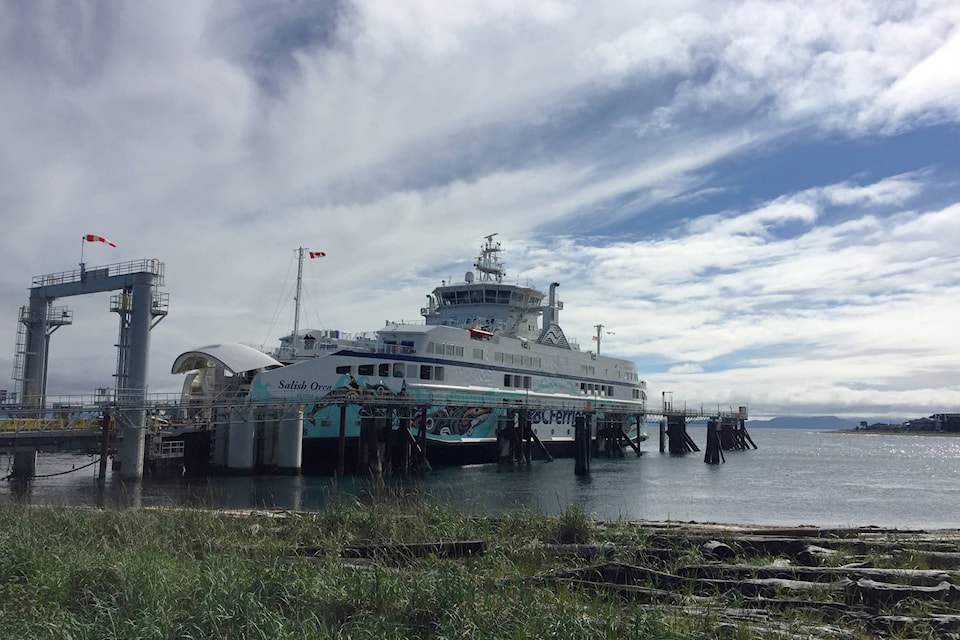After a 50-day journey from a shipyard in Gdansk, Poland, the first of three new vessels coming into the BC Ferries fleet departed on its inaugural sailing from Comox en route to Powell River around 6:30 a.m Tuesday.
The Salish Orca - the first ferry in the province to operate on liquefied natural gas (LNG) - is 40 per cent less expensive than traditional diesel fuel used in other ferries.
Right away, “that drops a big part” of the corporation’s operating costs, explained Mark Collins, CEO of BC Ferries. “LNG is an exciting new development …. (it) is a benefit to the fare payers.”
While the vessel uses LNG delivered from a holding facility in Ladysmith, it is considered a dual-fuel ferry, capable of operating either on natural gas or ultra-low sulphur marine diesel.
The use of LNG on the Salish Orca, in addition to the Salish Eagle and Salish Raven (set to serve the Southern Gulf Islands), will result in an estimated reduction of 9,000 metric tonnes of CO2 per year - the same as taking appoximately 1,900 passenger vehicles off the road annually.
In addition to cost and environmental savings, Collins explained the slightly smaller ship has greater speed and reliability than its former counterpart - the Queen of Burnaby.
“The unique feature on this ship … is the two decks the cars are carried. One deck is down lower … that enables us to get more vehicles on a shorter ship which means greater manoeuvrability of the vessel.”
While the new ferry is slightly smaller than the former vessel, he added the ship is designed for harsh weather conditions, and noted he believes it will have a greater dispatch reliability in heavy weather. The final return trip sailing of the Queen of Burnaby Monday night was cancelled due to severe weather.
“(With) the hull design, reliable machinery but also as a double-ender, (the Salish Orca) doesn’t have to turn around when coming out of the terminal - she can just steam straight out. Often, it’s the turning around phase that limits our mobility in heavy weather.”
Michael Smit, senior master of the Salish Orca described the new ferry as “having a baby and it’s overdue.
“The Burnaby is a 52-year-old vessel. You can imagine driving a 52-year-old vehicle. Technology has come a very long way.”
The managing captain said he was one of the members on board who brought the vessel overseas - specifically from the Canary Islands to Panama.
He added the simple concept of not having to turn the ferry around after leaving a terminal saves a considerable amount of time and efficiency.
“The ship is a real pleasure to drive.”
The Salish Class vessels are three sister ferries that are identical in construction, however, each one features the artwork of a different First Nations artist.
The vessels were named to honour the Coast Salish people as the original mariners of the Salish Sea where they operate.
